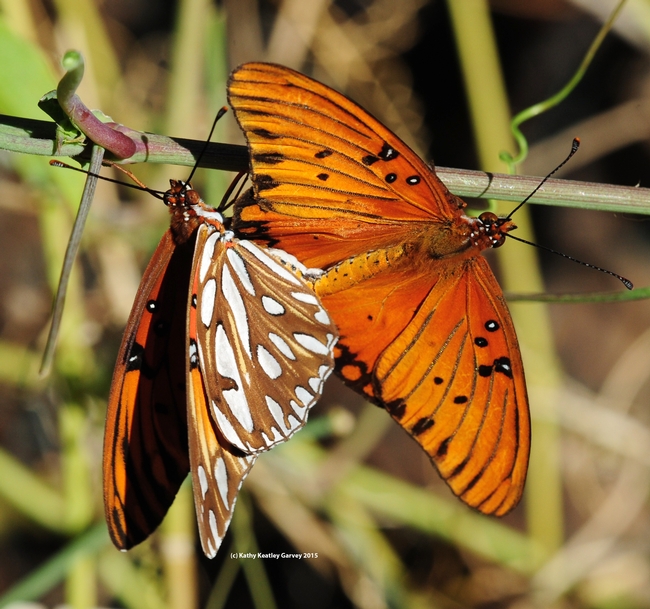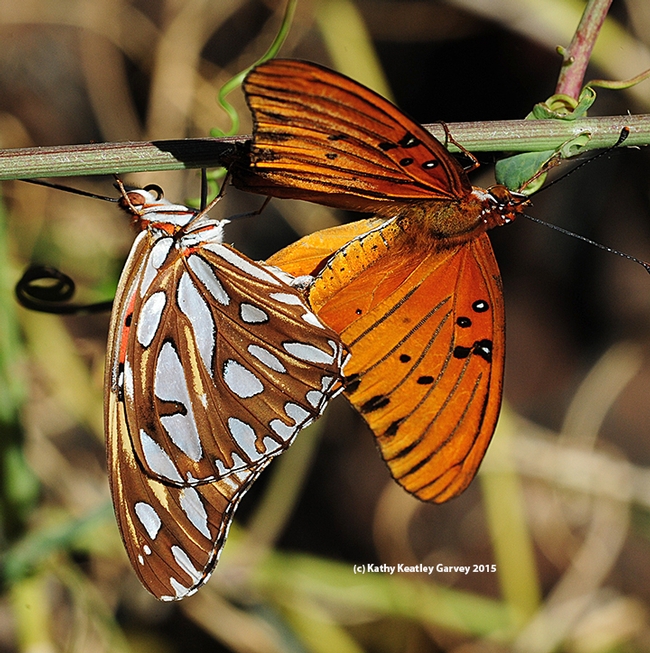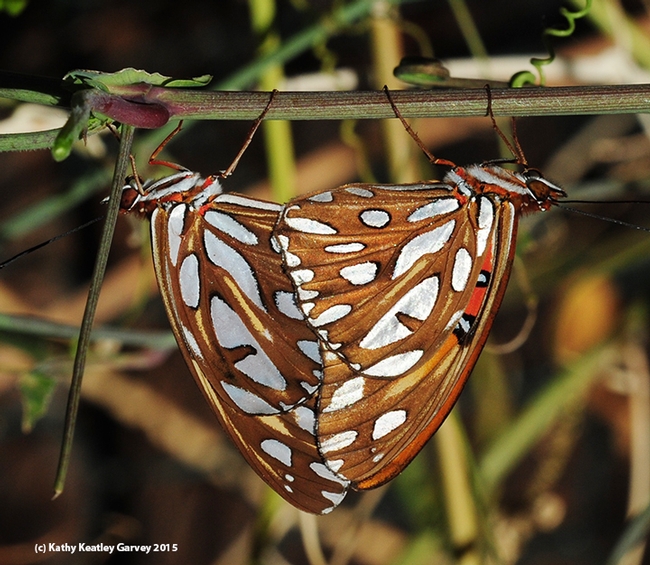Sex in the afternoon. On the passionflower vine.
That's what happened today on the Passiflora (see images below). Coming soon, more Gulf Fritillaries.
The Gulf Frit (Agraulis vanillae), an orangish-reddish butterfly of the family Nymphalidae, is as spectacular as it is showy. Its silver-spangled underwings absolutely glow in the sunlight.
However, much misinformation surrounds it.
A recent article in a Bay Area publication indicated that it's been around the Bay Area since the 1950s. It's actually been around much earlier than that. It was first documented in Southern California in 1870s, according to noted butterfly researcher Art Shapiro, professor of evolution and ecology at the University of California, Davis, who has been monitoring the butterflies of central California for four decades.
"It first appeared in the vicinity of San Diego in the 1870s,” he says. “It spread through Southern California in urban settings and was first recorded in the Bay Area about 1908. It became a persistent breeding resident in the East and South Bay in the 1950s and has been there since.”
Shapiro says it “apparently bred in the Sacramento area and possibly in Davis in the 1960s, becoming extinct in the early 1970s, then recolonizing again throughout the area since 2000.”
Have you ever wondered why the scientific name of the species is vanillae? That was an error traced back to the illustrator. German-born naturalist and scientific illustrator Maria Sibylla Merian (1647-1717) knew butterflies--she reared them--but she took some artistic liberties when it came to horticulture.
Merian drew the Gulf Frit on a vanilla orchid, and scientists assumed that this was the host plant. Not so. Passiflora is the host plant. "Johannes Fabricius knew that the bug eats Passiflora and tried to rename it passiflorae," wrote Shapiro in a 2008 edition of the Journal of the Lepitoperists Society.
It never happened. That's why we call it Agraulis vanillae and not Agraulis passiflorae.
But it is nicknamed the "passion butterfly."
Attached Images:

Gulf Fritillaries (Agraulis vanillae) mating on a passionflower vine. (Photo by Kathy Keatley Garvey)

Mating of the Gulf Fritillaries resumes. (Photo by Kathy Keatley Garvey)

In this photograph, note the silver-spangled wings of the mating Gulf Fritillaries. (Photo by Kathy Keatley Garvey)

The showy and spectacular Gulf Fritillaries. The shadow is a Passiflora leaf. (Photo by Kathy Keatley Garvey)